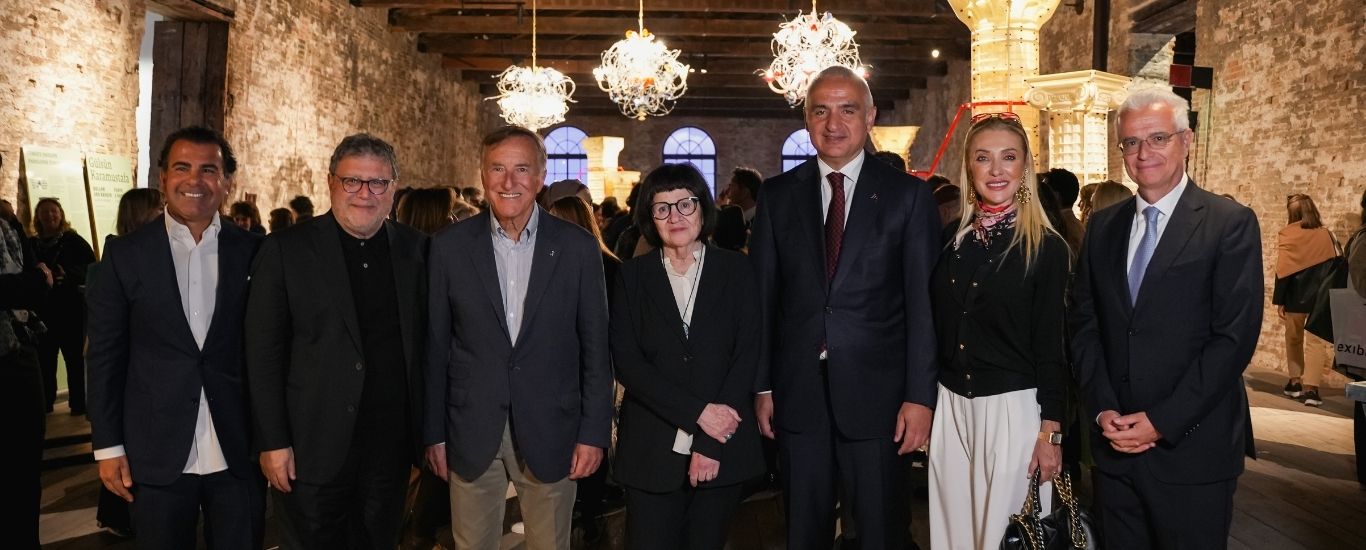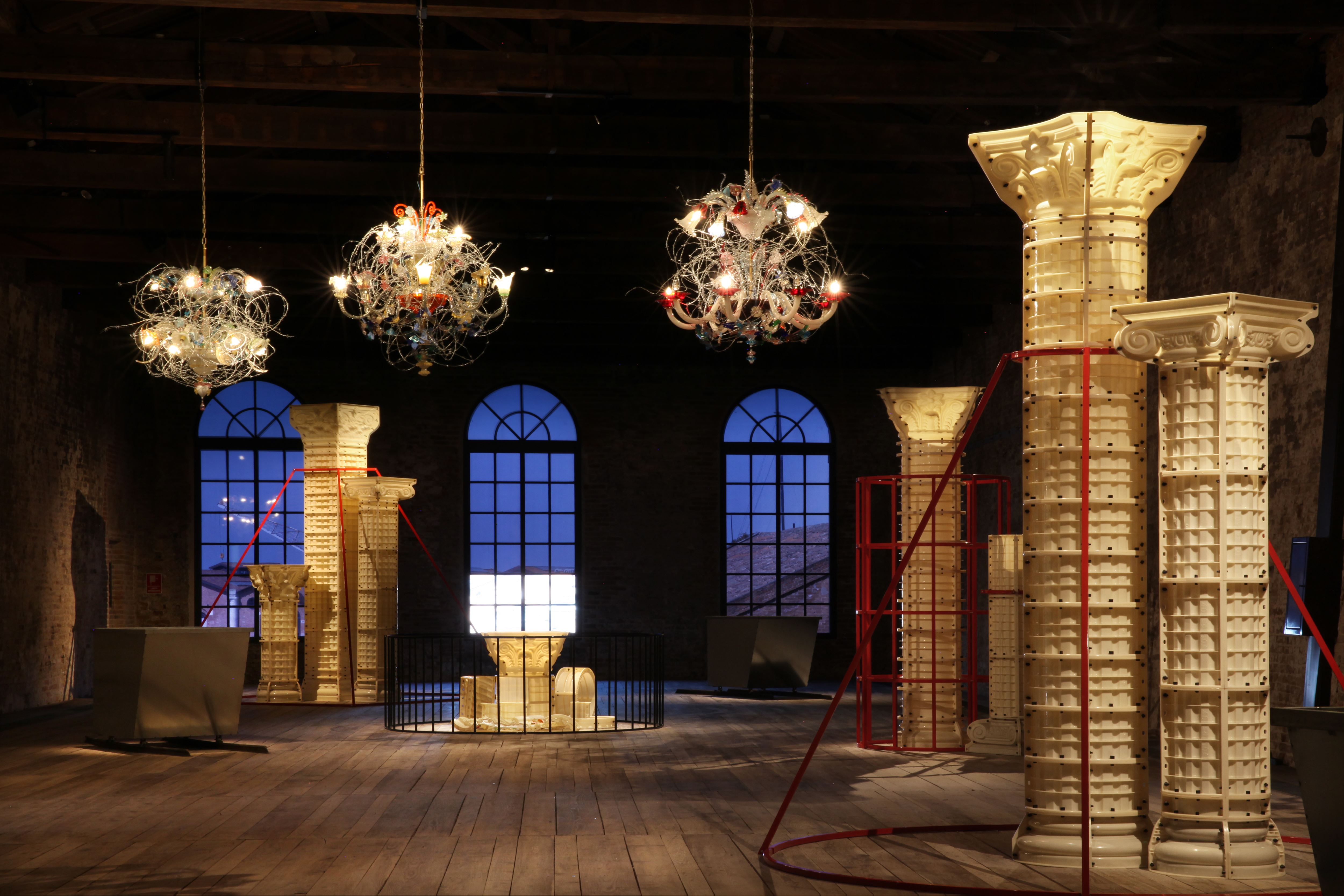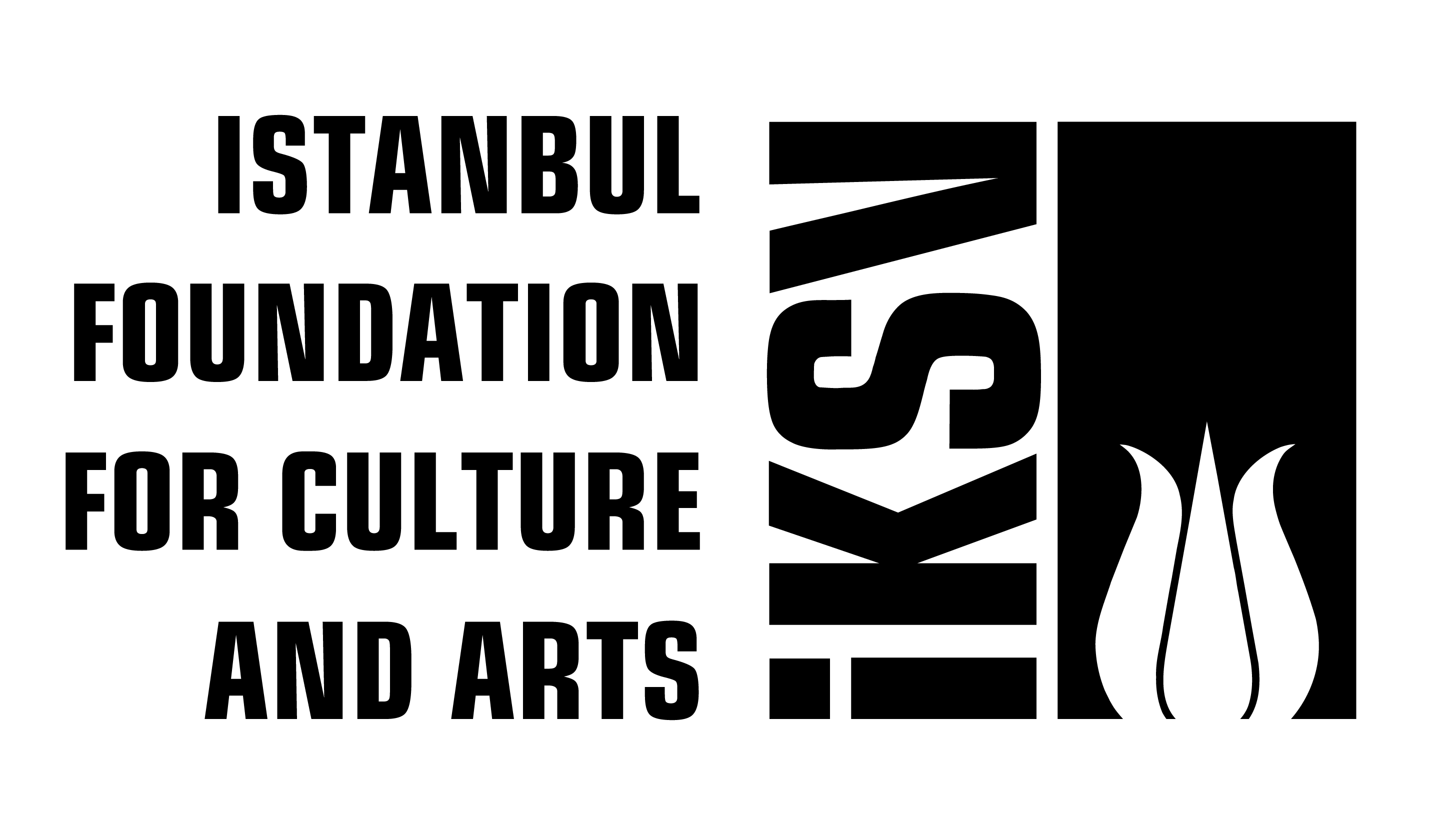The Türkiye Pavilion presents Hollow and Broken: A State of the World, a site-specific installation by Gülsün Karamustafa, one of Türkiye’s most influential and outspoken artists, at the 60th International Art Exhibition – La Biennale di Venezia. Situated in the Arsenale’s historic Sale d’Armi, the exhibition runs from 20 April to 24 November, with its pre-opening on 17, 18 and 19 April. Karamustafa’s installation invites viewers to consider the tragic and tumultuous realities of a world impacted by wars, earthquakes, migration and nuclear peril. Comprising an interconnection of sculptural works that champion her use of disparate materials, the premiere of a new film, and a sound installation, these works reflect her perception of the world as broken and empty.

Space plays a central role in the exhibition, with Karamustafa drawing inspiration from the rectangular shape of the Sale d’Armi, reminiscent of the dimensions of the historical Hippodrome of Constantinople in Istanbul, and the building’s former history, reinforcing her connection with the surroundings. Upon entering the Pavilion, visitors encounter three striking chandeliers suspended from above, crafted from discarded Venetian glass, each representing a monotheistic faith: Christianity, Judaism, and Islam. These luminous symbolic objects are shrouded in a web of barbed wire – conveying the historic tensions and quarrels between each religion and serving as a lens through which she explores the state of our world today.
This concept echoes Karamustafa’s 1998 artwork, Trellis of My Mind, a 20-metre frieze composed of 300 colourful religious illustrations from Islamic, Christian, and Jewish manuscripts. The artwork portrays the intersection and coexistence of these religions, drawn from her experiences living in Istanbul. Despite their shared narratives, Karamustafa acknowledges these religions have endured perpetual conflict throughout history and continue to be shaped by her personal memories of past wars.
Hollow, plastic moulds that resemble concrete columns are scattered throughout the space, the choice of materials starkly contrasting the traditional associations to glory, artillery and power. The column moulds, supported only by propping devices, embody the artist’s feelings of emptiness and brokenness in the current world – their vacant nature is accentuated by lighting, contrasting the ‘force’ of columns inherent in architecture – stability, prowess, durability, and victory.
Shattered Venetian glass emerges as a recurring motif within the installation as a material that resonates deeply with Karamustafa’s feelings. Situated within the Pavilion are four dismantled wheeled carts – with their ends cut off on either side – loaded with discarded remnants of Murano glass shards, evoking the transportation of heavy cargo. Propped up solely by rails, the carts give the impression that they’re floating, albeit constrained by their restricted movement. These works establish a direct link to the historical significance of the Sale d'Armi, once Venice’s largest production centre during the pre-industrial era and a potent symbol of military power.
Premiering for the first time is a new film by the artist, comprising black and white images from found propaganda footage depicting migration, war, and demonstrations from around the globe. Originally screened in cinemas, these images have been reimagined by Karamustafa, devoid of the cameraman’s original viewpoint, to spotlight the human condition. By reframing this material, the film delves deeper, shedding light on the suffering of the individuals captured in the footage. The film interweaves all elements of the artist’s installation into an impactful statement. An accompanying sound composition both envelopes and shadows the movement of visitors, where a deep, resonant tone fills the air, fluctuating in intensity as it traverses the exhibition space.

“What I am dealing with” Karamustafa says of this work, “is the state of a world hollowed out to the core by wars, earthquakes, migration and nuclear peril unleashed at every turn, threatening humankind while nature is ceaselessly scathed and the environment made sick. I attempt to physically and emotionally summon into existence this phenomenon: the emptiness, the hollowness, the brokenness produced by the devastation that has become commonplace, whose pace becomes ever more impossible to keep up with, by the unimaginable grief that keeps on striking again and again at relentless intervals, by empty values, identity struggles and brittle human relationships.”
More on Gülsün Karamustafa to be explored in the publication
The publication that complements the exhibition consists of four pieces: one book dedicated to the Venice project with 12 contributors reflecting on the materials employed by Karamustafa, and another focusing on the artist’s previous works in which the artist’s fluid narrative unveils a multilayered continuity in her practice leading up to the Hollow and Broken. A folded poster with snapshots from Karamustafa’s new film, which she sees as the binding statement of her exhibition, is also inserted. Finally, a stripe holds all these three elements together. The book is edited by Melis Cankara with graphic design by Esen Karol. Editor Cankara states, “This was imagined as a book that the artist would both write and read. Without Gülsün Karamustafa being such an open artist to share both her production process and the production itself, making such a book would not have been possible.”
Contributors include: Ezgi Alkan, Ersin Altın, Sevince Bayrak, Melis Cankara, Hasan Cem Çal, Alev Erkmen, Furkan Keçeli, Gökhan Kodalak, Aren Kurtgözü, Emre Özgüder, Waseem Ahmad Siddiqui, İpek Yürekli.
Co-published by İKSV and Mousse Publishing, the publication is available through La Biennale bookstores, the Mousse website, and Mousse distributors with the opening of the Biennale.
The project team of Hollow and Broken: A State of the World consists of Yelta Köm, the design consultant of the exhibition, Furkan Keçeli, the sound design consultant of the exhibition, and Erinç Tepetaş, the lighting design consultant of the exhibition.
About Gülsün Karamustafa
Gülsün Karamustafa (b.1946) is one of the most influential artists for younger generations. Through her art practice, spanning the course of over fifty years, she focuses on such topics as the modernisation of Türkiye, uprooting and memory, migration, locality, identity, cultural difference and gender from an array of perspectives. Within her works, which stem from both personal and historic narratives, she champions the use of disparate materials and methods. Through media as diverse as painting, installation, photography, video and performance, she calls into question historical injustices in the social and political fields. Karamustafa has participated in numerous international biennials, including Istanbul, TR; São Paulo, BR; Gwangju, KR; Kyiv, UA; Singapore, SG; Havana, CU; Thessaloniki, GR; Sevilla, ES. She has presented solo exhibitions at major institutions and galleries worldwide, including Salt Beyoğlu and Salt Galata, Istanbul, TR; Hamburger Bahnhof – Museum für Gegenwart, Berlin, DE; Van Abbemuseum, Eindhoven, NL; IVAM Institut Valencià d’Art Modern, Valencia, ES; EMST National Museum of Contemporary Art Athens, GR; Kunstmuseum Bonn, Bonn, DE; Lunds Konsthall, Lunds, SE; Salzburger Kunstverein, Salzburg, AT; Kunsthalle Fridericianum, Kassel, DE; Museum Villa Stuck, Munich, DE, among others.
Her works have been included in the permanent collections of Centre Pompidou, Paris, FR; Tate Modern, London, GB; Solomon R. Guggenheim Museum, New York, US; Museum of Contemporary Art Chicago, Chicago, US; Musée d’Art Moderne, Paris, FR; Van Abbemuseum, Eindhoven, NL; Ludwig Museum, Cologne, DE; MUMOK, Vienna, AT; Wien Museum, Vienna, AT; Warsaw Museum of Modern Art, Warsaw, PL; Neues Museum Nürnberg, Nuremberg, DE; EMST National Museum of Contemporary Art Athens, Athens, GR; Istanbul Modern Art Museum and Arter, Istanbul, TR. She received the Roswitha Haftmann Prize in 2021 and Prince Claus Award in 2014. The artist lives and works in Istanbul and Berlin.
The Türkiye Pavilion at the Biennale Arte 2024
The 2022-2024 Advisory Board of the Türkiye Pavilion consists of General Manager of Suna and İnan Kıraç Foundation, Culture and Arts Enterprises Özalp Birol; Lecturer at Marmara University Faculty of Fine Arts, Department of Sculpture Nilüfer Ergin Doğruer; artist İnci Eviner; Director and Curator of the Fiorucci Art Trust Milovan Farronato and Editor of Sanat Dünyamız and art writer Fisun Yalçınkaya.
The Türkiye Pavilion exhibition is commissioned by the Istanbul Foundation for Culture and Arts (İKSV) with the contribution of the Ministry of Culture and Tourism, under the auspices of the Ministry of Foreign Affairs of the Republic of Türkiye, with the global partnership and airline partnership of Turkish Airlines and with the production and publication support of SAHA Association. The Türkiye Pavilion has taken part in the International Art and Architecture Exhibitions of La Biennale di Venezia since 2014, thanks to the acquisition of the permanent venue at Sale d’Armi, Arsenale on the initiation of İKSV and with the support of 21 sponsors.
The Türkiye Pavilion at the Biennale Arte 2024 is supported by Akbank, Akfen Holding, AWC Group, Nezih-Berrak Barut, Bilge Öğüt Cümbüşyan-Haro Cümbüşyan, Fırat Çeçen, Füsun-Faruk Eczacıbaşı, Oya-Bülent Eczacıbaşı, Ebru Dildar Edin, Ahu-Can Has, Emin Hitay, Ayşegül-Doğan Karadeniz, Mey|Diageo, QNB Finansbank, Rana-Erol Tabanca, Melike-Özgür Tanrıkulu, Leyla Tara, and Turgut Yılmaz.
The individuals and institutions that contributed towards a long-term venue for the Türkiye Pavilion are Akbank, Mehveş-Dalınç Arıburnu, Berrak-Nezih Barut, Ali Raif Dinçkök, Vuslat Doğan Sabancı, Füsun-Faruk Eczacıbaşı, Oya-Bülent Eczacıbaşı, Nesrin Esirtgen, Eti Gıda San. ve Tic. AŞ, Garanti BBVA, Ahu-Can Has, Öner Kocabeyoğlu, MAÇAKIZI, Tansa Mermerci Ekşioğlu, Rana-Erol Tabanca, SAHA Derneği, Taha Tatlıcı, Sinan Tara, Vehbi Koç Vakfı, Zafer Yıldırım, and Yıldız Holding AŞ.
